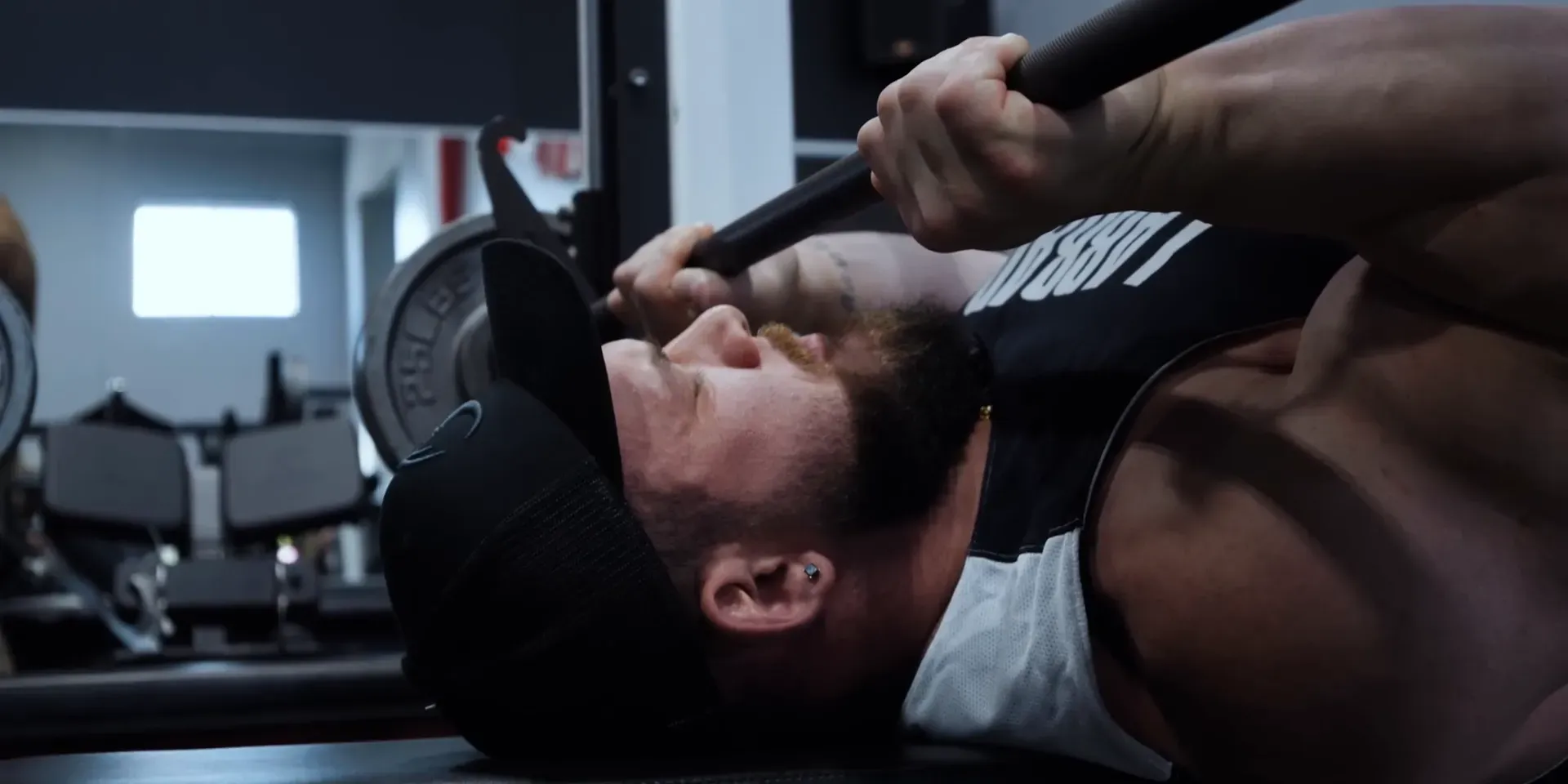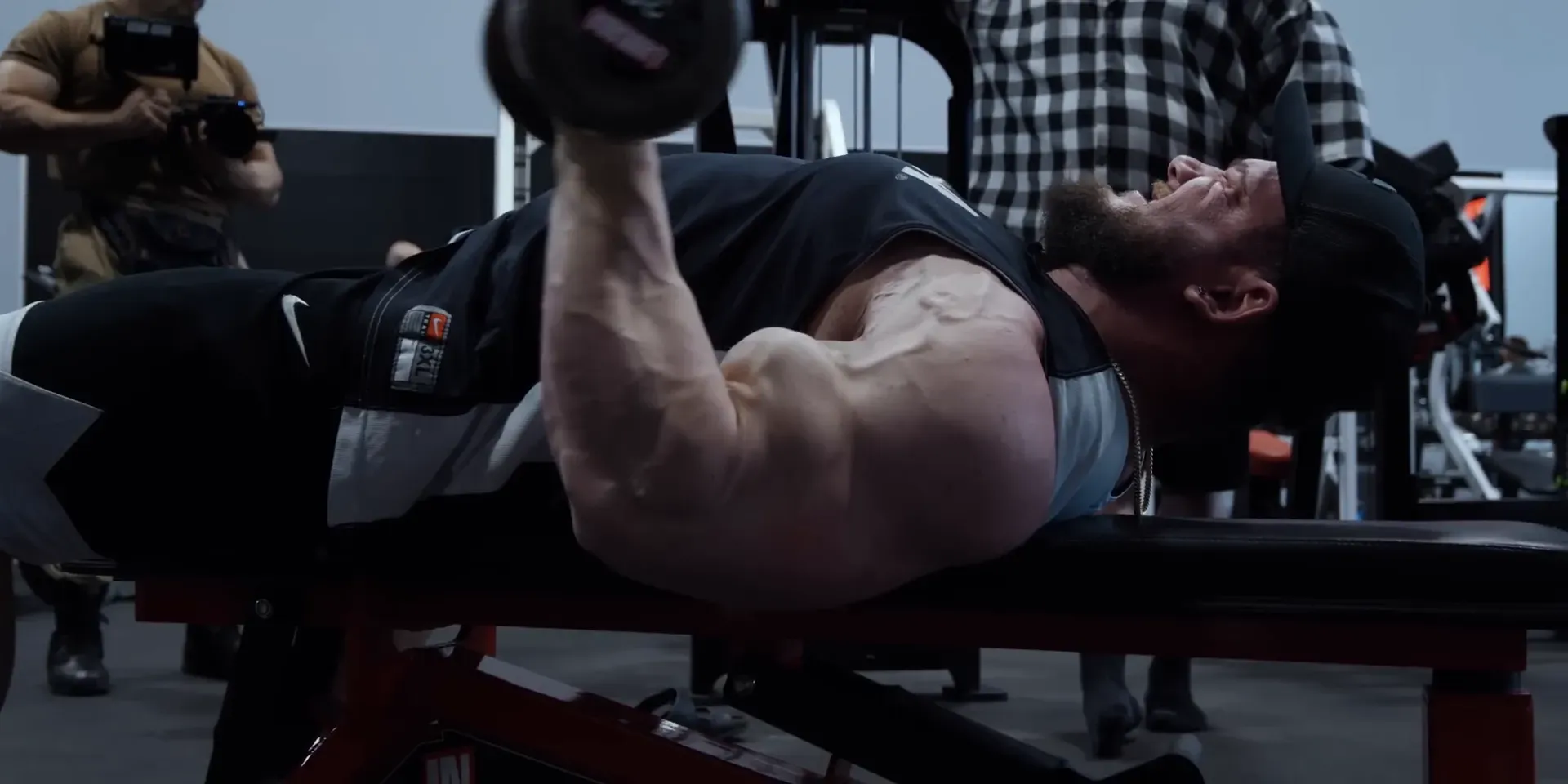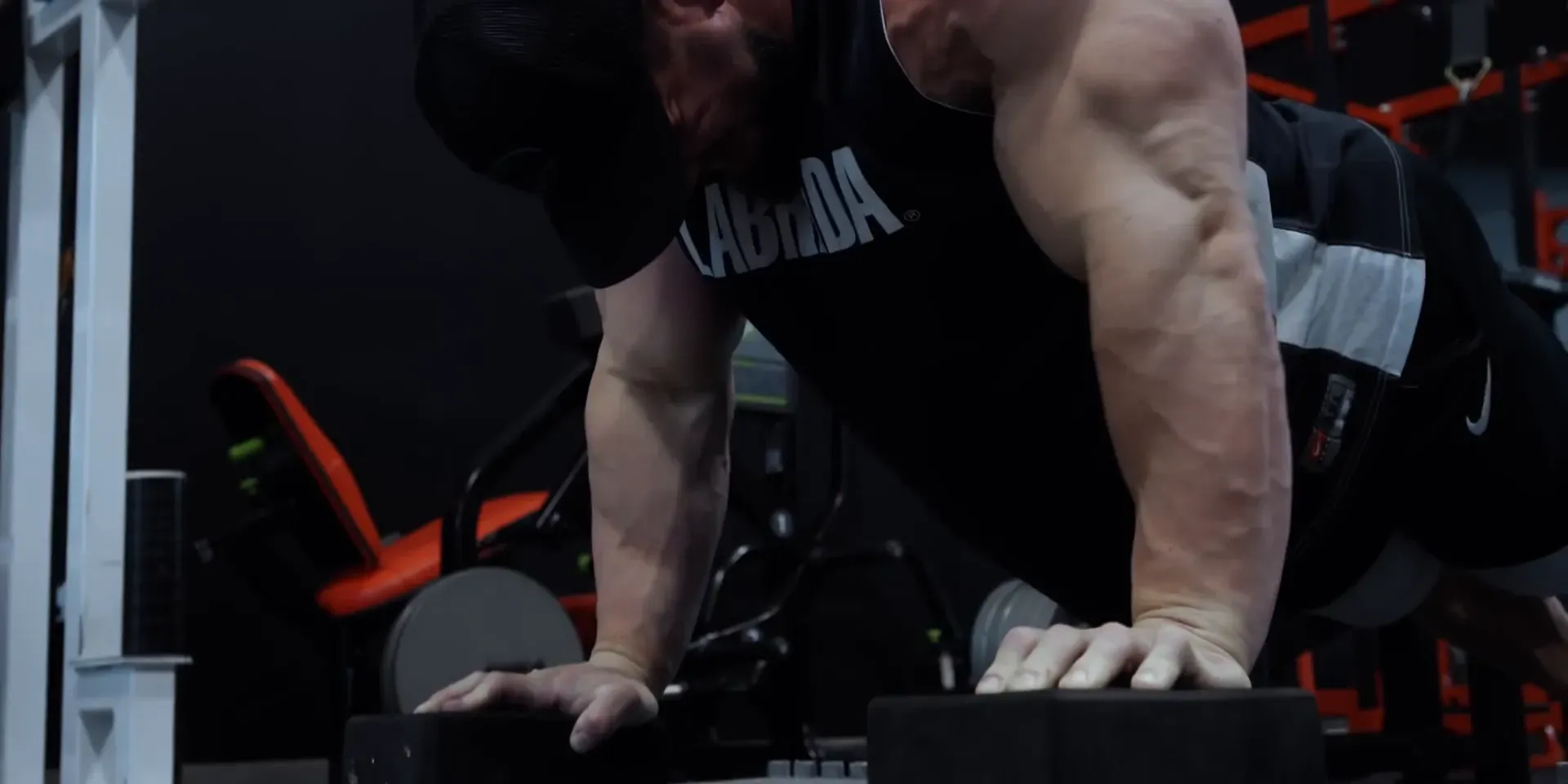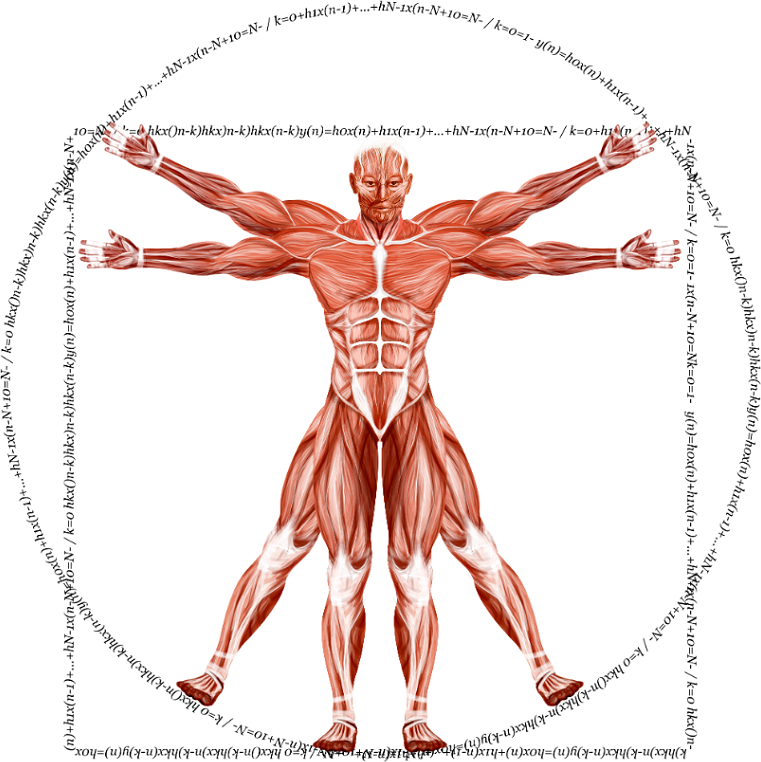The Best Arm Workout to Sculpt Powerful, Muscular Arms [Expert Guide]
Build bigger, stronger arms with these proven arm workout strategies and tips

Key Takeaways
- Prioritize Technique: Good form is essential for preventing injury and ensuring your muscles are targeted effectively during every rep.
- Incorporate Variety: Using a mix of exercises, grips, and angles keeps your arm workouts fresh and maximizes muscle growth.
- Focus on Intensity and Volume: Push yourself close to failure and adjust volume gradually for consistent strength and size gains.
- Use Advanced Techniques: Supersets, drop sets, and rest-pause training can push your muscles beyond their limits, promoting faster progress.
- Recovery is Key: Adequate recovery time between workouts helps prevent injury and promotes long-term gains.
Want to get the most out of your arm workouts and build stronger biceps and triceps?
In this expert review, we analyze, critique, and expand on Dr. Mike Israetel’s arm workout session, which explores unique exercises and techniques for maximizing arm muscle growth.
What makes our guide different? We dig deeper into the science behind each exercise and provide you with evidence-based tips for maximizing your arm pump. Our team, including an exercise scientist with over 20 years of gym experience, has carefully reviewed and fact-checked every detail.
Keep reading for little-known tips that will help you build more muscle and improve your overall physique.
Related:
- 3 Arm Workouts for Muscle Hypertrophy (9 Best Exercises)
- Big Arms: How to Get Arms Like Arnold Schwarzenegger
- 12 Best Biceps Exercises for Bigger, Stronger Arms
In a Nutshell—Maximize Your Arm Gains
• Focus on proper technique, intensity, and volume to achieve the best results.
• Always prioritize form to avoid injury and enhance muscle activation, and challenge yourself by gradually increasing the weight and reps as you progress.
• For maximum growth, incorporate advanced training methods such as supersets, drop sets, and rest-pause training.
These techniques push your muscles to fatigue, ensuring they grow stronger and more defined. Remember, recovery plays a crucial role in muscle development—give your arms time to rest after each session to allow for repair and growth. Stay consistent with your training, and your arm strength and size will improve steadily over time.
| Key Concept | Main Insight |
|---|---|
| Technique | Good form prevents injury and ensures effective muscle targeting. |
| Intensity and Volume | Pushing close to failure and adjusting volume promotes growth. |
| Exercise Variety | Mixing up exercises, grips, and angles maximizes muscle activation. |
| Advanced Techniques | Supersets, drop sets, and rest-pause training push muscles beyond their limits. |
| Recovery | Allow muscles time to rest for optimal growth and injury prevention. |
Introduction to Arm Training

Arm training is essential for building strength and aesthetics. Strong arms not only enhance your physique but also play a critical role in overall performance. Whether you are lifting weights or engaging in daily activities, strong arms provide the support and power needed.
Arm training works both the biceps and triceps in the arm. The two muscles have separate functions. Biceps are mainly used to flex the elbow, whereas the extension of the elbow occurs through the triceps.
Understanding Training Pillars for Arm Workouts
There are three main pillars of effective training: technique, intensity, and volume. Each pillar plays a vital role in muscle development.
- Technique: Good technique is the foundation. It helps prevent injuries and ensures you’re working the right muscles. Always prioritize form over weight.
- Intensity: This refers to how hard you push yourself during each set. Training close to failure stimulates muscle growth.
- Volume: This is the total amount of work you do in a training session. It includes the number of sets and reps. Adjusting volume over time helps in making consistent gains.
Ultimate Arm Workout Session

Before diving into your arm workout, it’s crucial to warm up properly. A good warm-up increases blood flow to the muscles and prepares your body for the workout ahead. Dynamic stretches and light cardio can be beneficial.
Incorporating arm exercises using an arm exercise machine during your warm-up can activate your muscles, ensuring you're ready for more intense exercises like a good arm workout or arm pump workout.
Once warmed up, start with compounds. Exercises that utilize multiple muscle groups simultaneously are great for building overall strength. Then, isolation exercises, such as curls and extensions, target the specific muscles.
The Skull Crusher Exercise
The Skull Crusher is a classic exercise for targeting the triceps. It’s simple but effective. This exercise can be performed with dumbbells or a barbell, and it can be done on a bench or the floor.
To perform a Skull Crusher, lie on your back and extend your arms straight above your chest. Slowly lower the weights toward your forehead, keeping your elbows tucked in. Then, press back up to the starting position. Focus on controlling the weight during the eccentric phase for maximum benefit.
Push Up Board
The Push Up is a staple exercise that targets the chest, shoulders, and triceps. It’s versatile and can be modified to suit any fitness level. To increase the challenge, try different variations like close-grip or incline push-ups.
For the Push Up Board workout, you want to get in as many repetitions as possible with perfect form. Make sure you are controlling your lower half and maintaining a straight line from head to heels. This exercise also works the upper body, but it challenges your core as well.
Lying Dumbbell Curl Explained
The lying dumbbell curl is a unique twist on traditional bicep curls. This exercise targets the biceps while maximizing the stretch. You’ll find this movement can create a significant pump.
To do the lying dumbbell curl, lie flat on a bench and have your chest facing down. Let your arms dangle straight downwards towards the ground with the dumbbells in hand. As you curl those weights up, keep the elbows closed in and squeeze upwards at the top.
What sets this curl apart is the emphasis on the stretch. As you lower the weights, reach forward to enhance the stretch in your biceps. This motion not only engages the muscle but also challenges your stability.
It’s essential to control the movement. Avoid swinging the weights; instead, focus on a slow and deliberate motion. This way, you get a maximum tensile strength on the biceps all through the movement range.
Performing the EZ Bar Curl
The EZ bar curl is a staple for developing bicep strength. It allows for a more natural grip, reducing strain on your wrists. This exercise can be performed standing or seated.
To execute the EZ bar curl, start by gripping the bar with your hands shoulder-width apart. Keep your elbows close to your body as you curl the bar up towards your chin. Focus on squeezing your biceps at the top of the movement.
Control must be maintained all the way down. The eccentric phase is also critical for building up the muscle. Lower the bar slowly and feel a stretch within the biceps during the lowering process.
You can add variations like reverse grip or alternating grip to work on the intensity. Different parts of the biceps will be targeted and help break a plateau.
Wrapping Up the Workout
Taking some time at the end of this workout, if you are closer to the end, take some time to reflect on your performance. You should have been properly challenged on each exercise you did; there shouldn't be room for inertia or mediocrity. Remember, you're doing all this to stimulate growth, not just to get it over with.
Consider finishing with a burnout set using lighter weights and higher reps. It’s a great way to maximize the arm pump workout and ensure your muscles are fully fatigued.
Tips for Effective Arm Workout Training
- Focus on Form: Always prioritize good form over lifting heavy weights. Proper technique prevents injuries and maximizes effectiveness.
- Incorporate Variety: Use different exercises and grips to target your arms from various angles. This keeps your training fresh and effective.
- Mind-Muscle Connection: Concentrate on the muscles you are working. This mental focus can enhance muscle activation.
- Progressive Overload: Gradually increase weights or reps over time to continue challenging your muscles.
The Importance of Technique
Technique is crucial in arm exercises. Proper form ensures that you are effectively targeting the intended muscles. It also helps to prevent injuries, allowing you to train consistently.
Take the time to learn each exercise. If you're unsure about your form, consider working with a trainer. They can provide valuable feedback and help you make necessary adjustments.
Modulating Set Volumes for Good Arm Workouts
Understanding how to modulate set volumes is key for effective arm exercises. Start with a manageable number of sets and gradually increase as your strength improves. This prevents overtraining and promotes sustainable progress.
For beginners, aim for two to three sets per exercise. As you become more comfortable, you can increase to four or five sets. Listen to your body and adjust accordingly.
Understanding Muscle Activation Techniques
Muscle activation is vital for effective arm training. When you activate muscles properly, you maximize the effectiveness of each exercise. This leads to better gains and improved performance.
Activate the muscles with a focus on mind-muscle connection. You should focus on the muscle being worked during each rep. Imagine that it's contracting and stretching with each rep.
For example, during bicep curls, think about your biceps doing the work. Feel the contraction as you lift the weight and the stretch as you lower it. This focus can significantly enhance your workout.
Techniques for Better Activation
- Slow Down the Tempo: Slower movements increase time under tension. This can help with muscle engagement.
- Use Isolation Exercises: These exercises focus on one muscle group. They allow for better concentration on that muscle.
- Incorporate Pauses: Pausing at the peak of the movement can enhance activation. It forces the muscle to work harder.
Advanced Training Techniques
Once you have the basics down, it’s time to explore advanced techniques. These can take your arm training to new heights. Here are some effective methods to consider.
Supersets
Supersets involve performing two exercises back-to-back without rest. This increases intensity and can lead to greater muscle fatigue. For arms, pair a bicep exercise with a tricep exercise to get the most out of your arm pump workout.
For example, do a set of bicep curls followed immediately by tricep dips. This will challenge both muscle groups, enhancing the overall pump.
Drop Sets
Drop sets are also very effective. You start with a heavy weight and do as many repetitions as you can manage and then, when you fail, drop the weight and continue. This will be, without a doubt, a surefire method of getting your muscles to their absolute limits. That is a good addition to doing your arm workout so you build up strength and muscle in this area.
For instance, you can start with a heavy EZ bar curl. After reaching failure, switch to lighter dumbbells. This technique increases muscle endurance and size.
Rest-Pause Training
This technique involves taking brief breaks during a set. After reaching near failure, pause for a few seconds, then continue. This allows you to push beyond your limits.
For example, if you are doing skull crushers, perform as many reps as possible, rest for 10 seconds, then continue. This method can lead to significant gains.
Final Thoughts and Reflections

After doing arm workouts, take a step back and think about what worked and what didn't. This self-reflection may potentially allow you to adjust your training routine to get better results.
Remember, "consistency is key." Just stick to your plan and only change your exercises when appropriate, whether it’s adding in new arm workout machines or trying out a different arm workout. Observe your response, and make adjustments to your arm exercises as needed.
Also, recovery is crucial. Make sure to allow your muscles time to heal after an intense arm pump workout. This will help prevent injuries and ensure long-term progress.
Practical Applications
- Prioritize Technique for Injury Prevention: Focus on perfecting form before increasing weight. This can reduce injury risk, allowing for consistent progress. For example, practice with lighter weights until each movement feels stable and precise. Even seasoned lifters can benefit from form checks every few weeks.
- Implement Progressive Overload for Steady Gains: Increase weight or reps each week to challenge your muscles continually. For instance, start with 3 sets of 8-10 reps for bicep curls, then gradually increase the reps or weight as you gain strength. This approach keeps workouts effective while minimizing burnout.
- Apply Intensity Principles in Each Set: Training close to failure maximizes muscle recruitment, promoting growth. During exercises like skull crushers, stop 1-2 reps before failure to maintain control. Aim for around 8-12 reps per set, adjusting as you progress.
- Warm Up for Optimal Performance and Injury Reduction: Integrate a warm-up that includes dynamic stretching and light cardio. This can reduce muscle strain and prepare your arms for intense training. For example, try a quick 5-minute warm-up with arm rotations and shoulder stretches.
- Superset for Increased Intensity and Time Efficiency: Pair biceps and triceps exercises back-to-back. For example, perform a set of lying dumbbell curls immediately followed by tricep dips. This keeps the workout engaging, saving time and maximizing the pump effect.
- Modulate Volume Based on Experience Level: Beginners can start with 2-3 sets per exercise, while advanced lifters can do up to 4-5. Adjusting volume ensures progress without overtraining. Track your set totals weekly and aim to increase as you gain strength.
- Use Rest-Pause Training to Push Beyond Limits: Rest for 10 seconds when you’re close to failure, then continue. This technique is effective in exercises like skull crushers, adding extra reps for greater muscle fatigue and growth.
Examples
- Advanced Superset Example: Perform 10 reps of close-grip push-ups, followed by 10 reps of EZ bar curls. Repeat for 3 sets with minimal rest.
- Progressive Overload Application: Start with a 20-lb dumbbell curl at 3 sets of 10 reps. The following week, increase to 22.5 lbs or aim for 12 reps.
Fact-Check of Key Points
- Role of Arm Strength in Daily Activities: While strong arms do assist in daily tasks, they are only one part of overall functional strength. Core and lower body strength often play a more crucial role in tasks involving lifting, carrying, or pushing.
- Bicep and Tricep Function: The article states that biceps flex the elbow and triceps extend it, which is correct. However, it overlooks the role of these muscles in stabilizing the shoulder during movements. For complete arm strength, shoulder stability should also be a focus.
- Effectiveness of Skull Crushers: Skull crushers are indeed effective for tricep isolation, but they can place strain on the elbows if performed with improper form or excessive weight. Beginners might benefit from alternative exercises like tricep pushdowns to reduce joint strain.
- Volume as a Key Training Pillar: Volume is important for muscle growth, yet individual recovery rates can vary. High volume without adequate recovery may lead to overtraining, especially for beginners or those with a lower tolerance to training frequency.
- Push-Up Variations for Arm Workouts: Push-ups are great for overall upper body strength, but they primarily target the chest, shoulders, and triceps, rather than the biceps. To develop balanced arm strength, it’s essential to include exercises that directly target the biceps.
Science of Arm Workouts
Arm workouts, essential for strength and aesthetics, often focus on both the biceps and triceps, each responsible for distinct actions—flexion and extension of the elbow, respectively. Current research highlights how factors like exercise type, technique, volume, and intensity are crucial for maximizing muscle activation and growth. Meta-analyses have shed light on the most effective strategies for enhancing arm strength and hypertrophy (muscle size), making it easier to optimize workout routines based on scientific evidence.
Meta-Analytic Findings on Effective Arm Workouts
- Exercise Type and Muscle Engagement
Studies highlight that exercises isolating either biceps or triceps are effective, but combining them with compound movements (e.g., push-ups or bench presses) yields higher engagement and muscle activation. This combination maximizes both muscle hypertrophy and functional strength across various exercises (Bauer et al., 2019). - Volume and Hypertrophy
Meta-analyses show that training volume—measured by the number of sets and reps—significantly affects arm muscle growth. High-volume training (6-12 sets per muscle group per week) was found to produce greater hypertrophy compared to lower volumes. Gradually increasing volume is also recommended for continued progress (Krieger, 2010). - Intensity and Training to Failure
Research suggests that training intensity—especially workouts approaching or reaching muscle failure—promotes hypertrophy and strength in arm muscles. Training close to failure appears to activate a higher proportion of muscle fibers, enhancing growth, though optimal results come from balancing this intensity with adequate recovery (Staniszewski et al., 2020). - Advanced Techniques: Supersets, Drop Sets, and Rest-Pause
Advanced techniques such as supersets (combining biceps and triceps exercises back-to-back), drop sets (reducing weight to continue the exercise after reaching failure), and rest-pause training (brief rests within a set) have been validated by meta-analyses as effective methods for boosting muscle endurance and maximizing arm size. These methods increase overall intensity and time under tension, key factors for hypertrophy (Peterson et al., 2010). - Importance of Technique for Injury Prevention
Good technique in arm exercises, particularly for isolation movements like skull crushers and EZ bar curls, is crucial for reducing injury risk. Maintaining controlled motion, especially during eccentric (lowering) phases, supports safe muscle engagement and enhances growth without risking strain (Nantakool et al., 2020).
Practical Applications of Science
- Focus on Technique and Volume: Ensure good form in each movement, progressively increasing training volume for sustainable muscle gains.
- Incorporate Advanced Methods: Use supersets, drop sets, and rest-pause techniques to intensify workouts and reach new hypertrophy levels.
- Adjust Training Based on Goals: For maximum hypertrophy, target high-volume and moderate-intensity sessions; for strength, include compound exercises with heavier weights.
Scientific Conclusion
Combining varied exercise types, progressive volume, and advanced techniques like supersets and drop sets leads to optimal arm development and muscle activation. Tailoring workouts based on meta-analytic findings helps ensure safe and effective arm training progress.
More Little-Known Tips for Maximizing Arm Growth
- Use Different Grips for Better Activation
Changing your grip can target different parts of your arms. For biceps curls, switch between overhand, underhand, and neutral grips to activate various muscle fibers. For triceps, try narrow grip push-ups or tricep dips to emphasize different areas of the muscle. This simple variation can help break plateaus and spark new growth. - Train Arms Last for Maximum Focus
Instead of starting with arm exercises, save them for the end of your workout. By this time, your body will be warmed up and your other muscles fatigued, allowing you to focus more on form and the muscle you’re targeting. You can go heavier with your arm work, leading to better isolation and growth. - Don’t Overlook Arm Recovery
Recovery is just as important as the workout itself. While it’s easy to focus on lifting heavy, giving your arms time to repair is essential for progress. Active recovery, such as light stretching or mobility work, can speed up muscle healing, helping you perform at your best in your next workout. - Incorporate Partial Reps
For an extra challenge, incorporate partial reps into your arm workout. After reaching failure, continue with partial range-of-motion reps to push your muscles beyond their usual limits. This technique forces the muscle to work harder, leading to greater muscle fatigue and growth stimulation. - Rotate Between Compound and Isolation Moves
Compound movements like push-ups and pull-ups hit multiple muscle groups and help build overall arm strength. Pair them with isolation exercises like tricep extensions or bicep curls to hone in on the specific muscles. Mixing both types of exercises ensures balanced development and keeps your routine fresh.
My Opinion on Training Arms Every Day
I know there’s a school of thought that advocates for training arms daily to achieve maximum growth. But personally, I disagree with this approach. The arms are smaller muscle groups and, like any muscle, they need time to recover and grow. Overtraining them every day can lead to fatigue, injury, and, ultimately, slower progress. Your arms don’t need constant attention; they need smart, strategic workouts with proper recovery.
Some people argue that training arms every day can accelerate muscle development, but I think it’s a recipe for burnout. Recovery is where the real growth happens. When you train your arms, you break down muscle fibers, and they need time to repair and rebuild stronger. Without rest, you're not giving your muscles the chance to adapt and grow to their full potential. More isn’t always better.
I also understand the desire to see quick results and the temptation to hit the gym harder every day. But quality trumps quantity in arm training. You don’t need to push your arms to their limit seven days a week. Instead, focus on maximizing the quality of your arm workouts, using varied exercises and intensities while allowing for enough recovery to let your muscles grow.
In my opinion, a smarter approach is to train arms 1-2 times a week with a focus on intensity, technique, and proper volume. This will ensure that you build strength and size without risking overtraining or injury.
Wrapping It Up: Arm Training That Works
When it comes to arm training, balance is key. You don’t need to hit your arms every day, nor should you rely too much on any single exercise. Smart, targeted workouts that focus on technique, intensity, and volume are the best way to see real growth. Remember to allow for recovery and prioritize good form to prevent injury and maximize your gains.
For those looking to take the guesswork out of their workouts, the Dr. Muscle app is an excellent tool. It provides customized arm training routines tailored to your goals, automating your arm workout plans to ensure you're hitting the right intensity and volume. No more planning or tracking – Dr. Muscle does it for you.
Give Dr. Muscle a try today with their free trial. It's a great way to streamline your workouts and see faster, more efficient results.
FAQ
What are the best exercises for building arm strength?
Some of the best exercises include bicep curls, tricep extensions, skull crushers, and push-ups. These target the major muscle groups in your arms effectively.
How often should I train my arms?
Training arms 1-2 times per week is ideal. This allows for adequate recovery while promoting growth. Listen to your body and adjust your frequency as needed.
Is it important to warm up before arm workouts?
Yes, warming up is crucial. A good warm-up prepares your muscles and joints, reducing the risk of injury. Include dynamic stretches and light cardio to get your blood flowing.
Can opening and closing my arms after a workout help my biceps heal faster?
Yes, gently opening and closing your arms can help improve blood flow and aid recovery. But the effect is likely to be modest. Bottom line, it’s important to let your muscles rest and repair for optimal growth.
Do arm workouts with no weights do anything?
Yes, bodyweight exercises like push-ups or dips still work your arms effectively! They help build strength and endurance, even without the need for weights.
How to exercise extremely weak arms?
Start slow! Focus on light resistance exercises with proper form and gradually increase intensity. With patience and consistency, your arms will get stronger and more toned over time.

